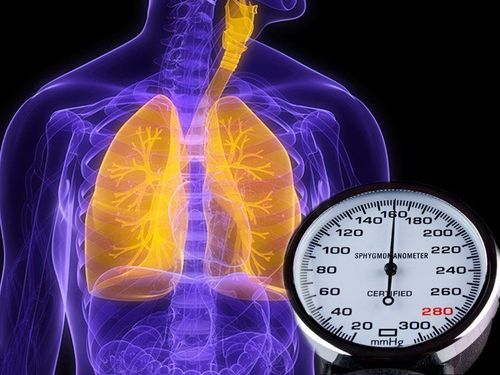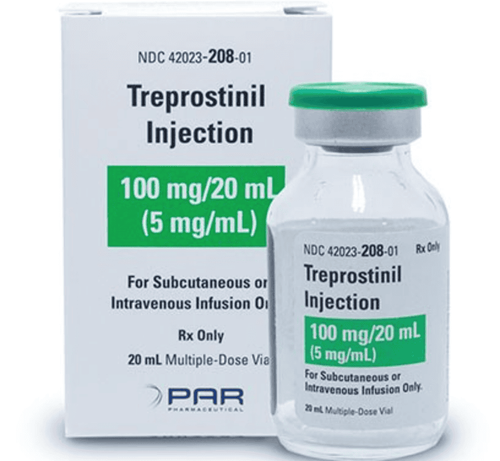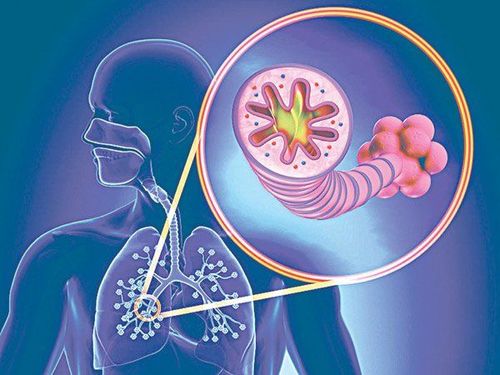This is an automatically translated article.
Pulmonary hypertension is a complex and often overlooked pathology. Unlike simple hypertension, this disease can be detected easily by using a blood pressure cuff. In pulmonary hypertension, only the blood vessels in the lungs are affected, becoming stiff, vulnerable, narrow, making the right side of the heart work harder and over time leading to heart failure.1. What is pulmonary hypertension?
The lower right chamber of the heart, the right ventricle, is responsible for receiving hypoxic blood from the great circulation and pumping it into the pulmonary arteries. The blood then travels to the lungs to be oxygenated and returns to the left upper heart chamber, the left atrium. From there, oxygen-rich blood moves into the lower left chamber of the heart, the left ventricle, before being pumped to the body's organs through the aorta.Unlike systemic blood pressure, which represents the pressure blood moves through the blood vessels in the body, pulmonary arterial pressure directly reflects the pressure the heart exerts to pump blood from the heart through the arteries lung. Accordingly, pulmonary arterial pressure is often much lower than systemic blood pressure. Normal pulmonary artery pressure is 8-20 mmHg at rest. If the pressure in the pulmonary artery is greater than 25 mmHg at rest or 30 mmHg during physical activity, this abnormally high condition is called pulmonary hypertension.
Whether pulmonary hypertension is dangerous depends on its long-term effects. Just as the consequences of high blood pressure in the body can cause the left heart to work harder, creating stronger contractions to supply blood to the body, pulmonary hypertension can occur when the arteries narrowing and thickening in the lungs, slowing the flow of blood through the pulmonary arteries to the lungs. As a result, the pressure in the pulmonary arteries increases as the right part of the heart needs increased force to contract. Over the long term, heart failure occurs when the heart is no longer able to contract, the heart becomes too weak to pump enough blood to the lungs, and symptoms manifest. The patient loses the ability to exercise or may even have difficulty breathing, cyanosis even at rest.
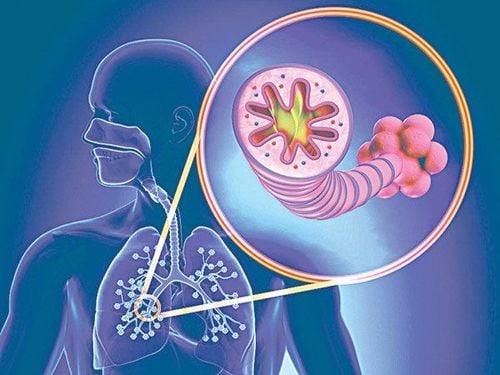
Tăng áp động mạch phổi có nguy hiểm hay không là tùy thuộc vào ảnh hưởng lâu dài của nó
2. What are the symptoms of pulmonary hypertension?
Common symptoms of pulmonary hypertension include:Shortness of breath Shortness of breath Fatigue Feeling light-headed or dizzy Chest pain like angina palpitations Anxiety or palpitations Swelling (edema) in the legs, ankles Legs, feet or abdominal cavity Symptoms such as above are often vague at first, but in the long run will get worse when the patient exerts himself or exercises. Therefore, pulmonary hypertension can limit the patient's ability to participate in physical activities and daily personal activities.
On the contrary, there are also many patients with pulmonary hypertension that do not have any symptoms until the condition progresses to a severe stage.
3. What causes pulmonary hypertension?
Changes in the pulmonary arteries that lead to pulmonary hypertension can be caused by:Abnormalities in the small branches of the pulmonary arteries (true pulmonary hypertension) Consequences of the effects effects on the left side of the heart Complications of lung diseases such as pulmonary fibrosis or a lack of oxygen in the body Presence of a blood clot that causes narrowing or blockage in the pulmonary artery Other causes of pulmonary hypertension , less commonly, include: polycythemia vera and thrombocythemia; systemic disorders such as sarcoidosis and vasculitis; metabolic disorders such as thyroid disease and glycogen storage disease...
4. How is pulmonary hypertension diagnosed?
Pulmonary hypertension can be difficult to diagnose because the symptoms are often similar to those of other heart or lung conditions. This can cause misdiagnosis or sometimes delay diagnosis.Accordingly, in the majority of cases, the diagnosis of pulmonary hypertension is based on the findings of the following two main tests:
Echocardiography : By using high-frequency sound waves to create an image With images of intracardiac hemodynamics, ultrasound will estimate pressures in the pulmonary arteries and detect disease. At the same time, echocardiography also helps to check the contractility of both sides of the heart to find the cause of the disease. Right Cardiac Catheterization: A thin, flexible tube is inserted into a vein in the neck, arm, or thigh and passed through the pulmonary artery to confirm this diagnosis by accurately measuring blood pressure in the right side of the heart and pulmonary artery. This is an invasive test and is only done in specialized cardiology centers. In addition, other tests are also needed to find the cause of the disease such as electrocardiogram, chest X-ray, lung function test, blood gas...
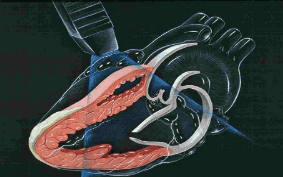
Chẩn đoán tăng áp động mạch phổi là dựa trên các phát hiện của siêu âm tim
5. How to treat pulmonary hypertension?
Even if the cause is identified, most cases of pulmonary hypertension are unlikely to be completely cured. However, the treatment of pulmonary hypertension, which should be performed as soon as possible, can effectively relieve symptoms and help patients improve their life activities. On the other hand, dangerous pulmonary hypertension is when the condition tends to get worse over time. If left untreated, the disease can cause heart failure, which can be fatal, so it's important to start treatment as soon as possible.If the person has another condition that results in pulmonary hypertension, this underlying condition should be treated first. It is trauma caused by the underlying disease that can permanently damage the pulmonary arteries.
Treatments for pulmonary hypertension alone include anticoagulants to prevent blood clots, diuretics to remove excess fluid caused by heart failure, and medications to help dilate the vessels pulmonary blood. Sometimes patients also need to consider angioplasty. In addition, home oxygen supplementation may also be indicated if the patient's blood oxygen level is always low, even at rest.
6. Is pulmonary hypertension dangerous?
The prognosis and long-term outlook for PAH varies from case to case, depending on factors such as:Cause of disease Time to diagnosis Degree of response to treatment Other underlying health conditions Accordingly, dangerous pulmonary hypertension is likely to affect exercise capacity as well as the ability to perform daily activities; If left for a long time, it will cause complications of right heart failure. Therefore, not only the patient himself, but also the patient's family, carer or cohabitants need to be provided with information and practical support in daily activities for the patient
In short, because each case of pulmonary hypertension is different; Therefore, it is important in the treatment regimen of pulmonary hypertension for each patient to depend on the exact cause of the pulmonary hypertension. When this disease is detected early, the right treatment plan for the disease is also implemented as soon as possible, which will quickly improve the patient's symptoms as well as the long-term prognosis.
If customers notice unusual problems, they should visit and consult with specialists.
Please dial HOTLINE for more information or register for an appointment HERE. Download MyVinmec app to make appointments faster and to manage your bookings easily.




